Affiliate links on Android Authority may earn us a commission. Learn more.

realme 8 Pro review: A leap behind the competition
Published onMarch 2, 2022
Realme 8 Pro
MSRP:
What we like
What we don't like
Our scores
Realme 8 Pro
Smartphone rivalries are great. realme’s constant drive to one-up Xiaomi has coincided with its desire to eke out a larger piece of the pie of India and Europe’s lucrative mid-range segment. This often heated competition has led to some fantastic phones and value-focused options for consumers. That pursuit for value and specs has also allowed users to experience features that just wouldn’t have been possible at the price point, as the pair have competed to bring premium bells and whistles to budget phones.
Following Xiaomi’s lead with the Redmi Note 10 series, the realme 8 Pro is bringing a similar focus on hardware value, a superior imaging experience, and overall refinement. But does it deliver? In a word: no. Find out why in Android Authority’s realme 8 Pro review.
What you need to know about the realme 8 Pro
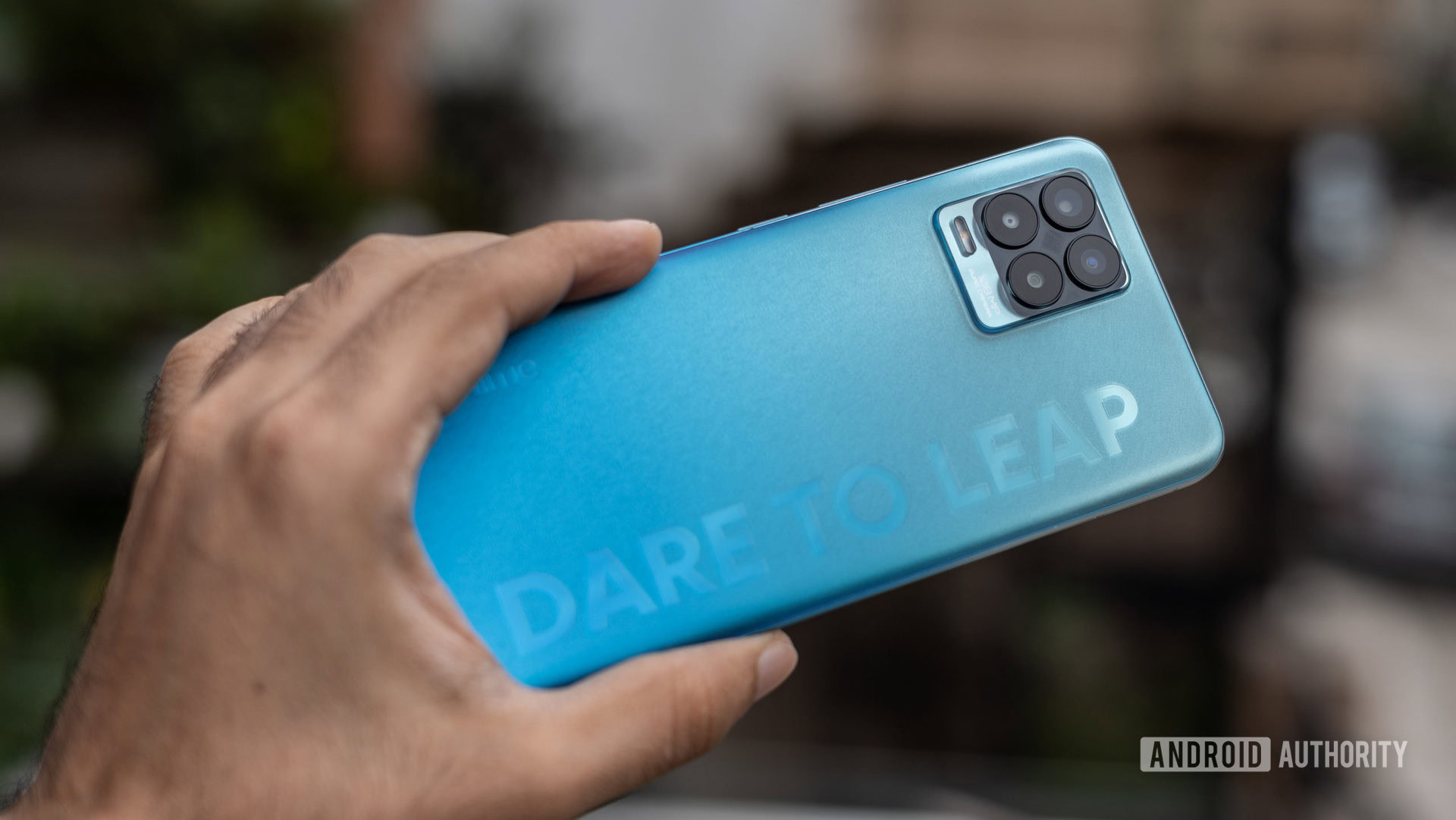
- realme 8 Pro (6GB/128GB): Rs. 17,999
- realme 8 Pro (8GB/128GB): £279/Rs. 19,999
The realme 8 Pro continues to use the tried and tested Snapdragon 720G as seen on the realme 7 Pro, and pairs it with Android 11. The most obvious competitor for the phone is Xiaomi’s Redmi Note 10 series. The latter excels in build with its use of glass, while the realme settles for plastic.
The big innovation this time around is the camera which at 108MP definitely brings the megapixels. Finally, there’s a reasonably big battery but more importantly, there’s 50W charging support which makes it a cinch to top-up the phone.
The realme 8 Pro goes head-to-head with the Redmi Note 10 series.
As for box contents, things are pretty straightforward. Buyers will get a manual, a SIM ejector, a basic TPU case to get started with. The most intriguing element here is the inclusion of a 65W charger considering the phone can’t charge any faster than 50W.
The realme 8 Pro goes on sale in India on March 25th. In the UK, pre-orders open on March 24 with shipping from March 31, though only the 8GB/128GB variant is available in the region. The realme 8 Pro is available in Infinite Blue, Infinite Black, and fluorescent Illuminating Yellow colorways.
How’s the design of the realme 8 Pro?
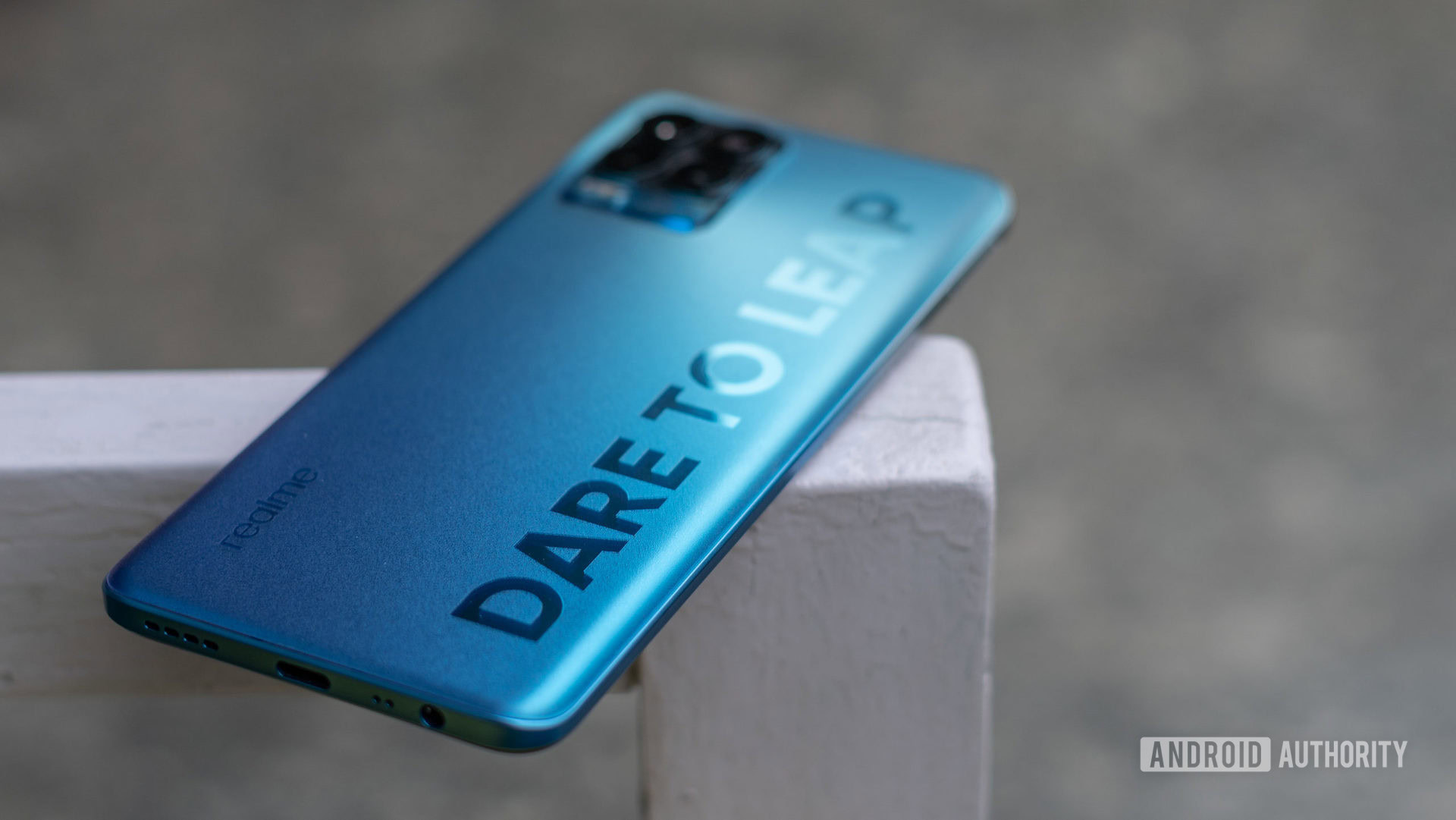
Beauty is in the eye of the beholder, and the realme 8 Pro is a testament to that. I can’t really say I’m a fan of the “bold” design choices over on the back of the phone. The unmissable brand slogan is just a bit too loud and unnecessary for my taste. Speaking to realme, I’ve been told the design language has proven very popular for the brand. So, you know, your mileage may vary.
The rest of the phone is finished in a matte gradient that is certainly eye-catching and shifts from light to dark shades of blue. The finish has a very subtle effect that almost glitters in direct sunlight. It’s rather fetching.
Overall, I appreciate the gradient and choice of colors, but the brand slogan at the back just doesn’t work for me.
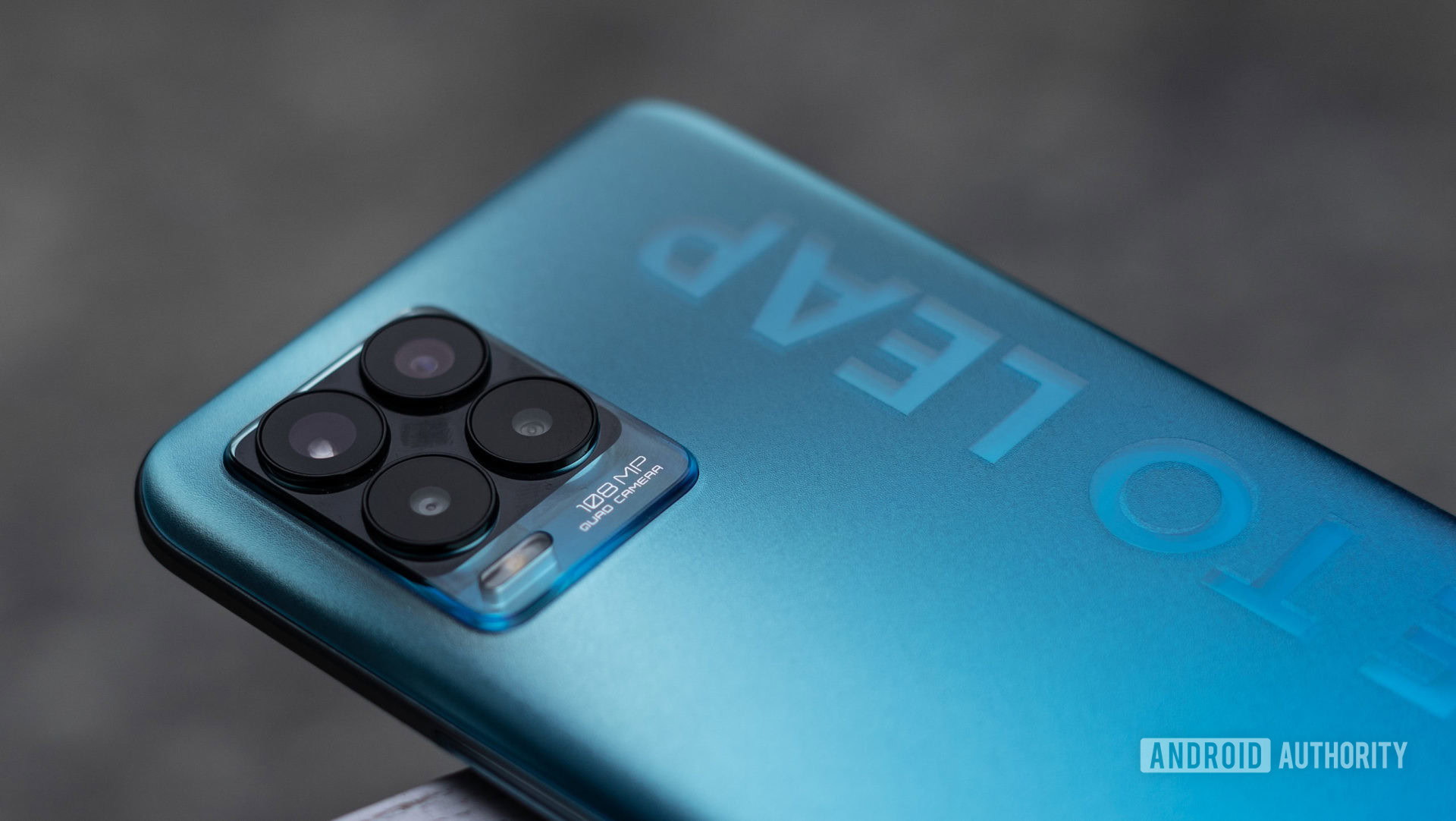
The other distinctive element on the rear is the camera island. The four concentric cameras sit proud of a raised rectangular module. I found myself constantly putting my fingers on the cameras when holding the phone and this leaves fingerprint smudges all over the lenses — not ideal.
Some might also have issues with the plastic mid-frame, but I found it to constructed well enough. Compared to metal, it should be a bit more resistant to dings from accidental drops. Meanwhile, tactile feedback for the power button is excellent. The unsegmented volume rocker, on the other hand, doesn’t always register.
The same experience extends to the in-display fingerprint reader. I wish more companies would opt for more reliable alternatives like side-mounted fingerprint scanners like on the Redmi Note 10 Pro. The fingerprint scanner failed to recognize my print more often than not. It got irritating enough that I ended up disabling the fingerprint scanner altogether. There’s a software-based face unlock option, but I found that equally unreliable too.
Elsewhere, the port layout is as standard as it comes on a mid-range phone. You’ll find a USB Type-C port at the bottom alongside a headphone jack. Audio from the headphone jack sounds plenty good as it should. The single bottom-firing speaker gets loud but doesn’t have much bass to speak off. I also found it very difficult to avoid covering up the speaker while gaming, so you’d better have wired or Bluetooth headphones on hand if you intend to crank up the volume while playing games.
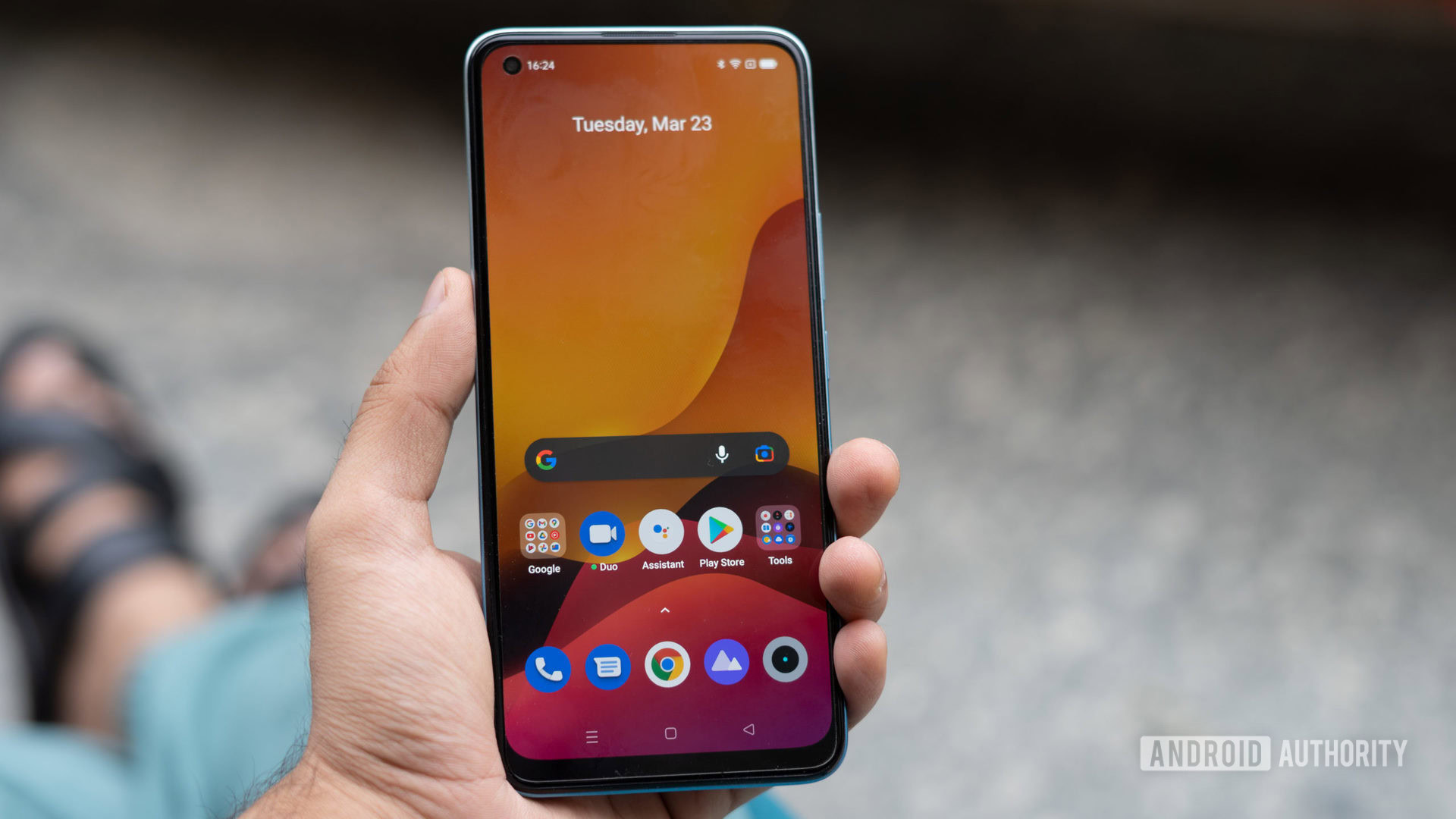
Over to the display, there’s a lot to like here. The 6.4-inch Full HD Super AMOLED panel looks plenty good. The colors look suitably punchy. The default tuning veers a bit too much towards boosting saturation, but this is easily corrected in the Settings.
High refresh rate displays are getting more prominent in the mid-range, and the lack of one is a definite downside.
Now, some users will, rightfully, raise issues with the static 60Hz refresh rate. High refresh rate panels are fast becoming the norm in even budget phones and the absence here is perplexing.
I would have also liked to see an IP rating now that Xiaomi has introduced it in some of its mid-range hardware.
How powerful is the realme 8 Pro?
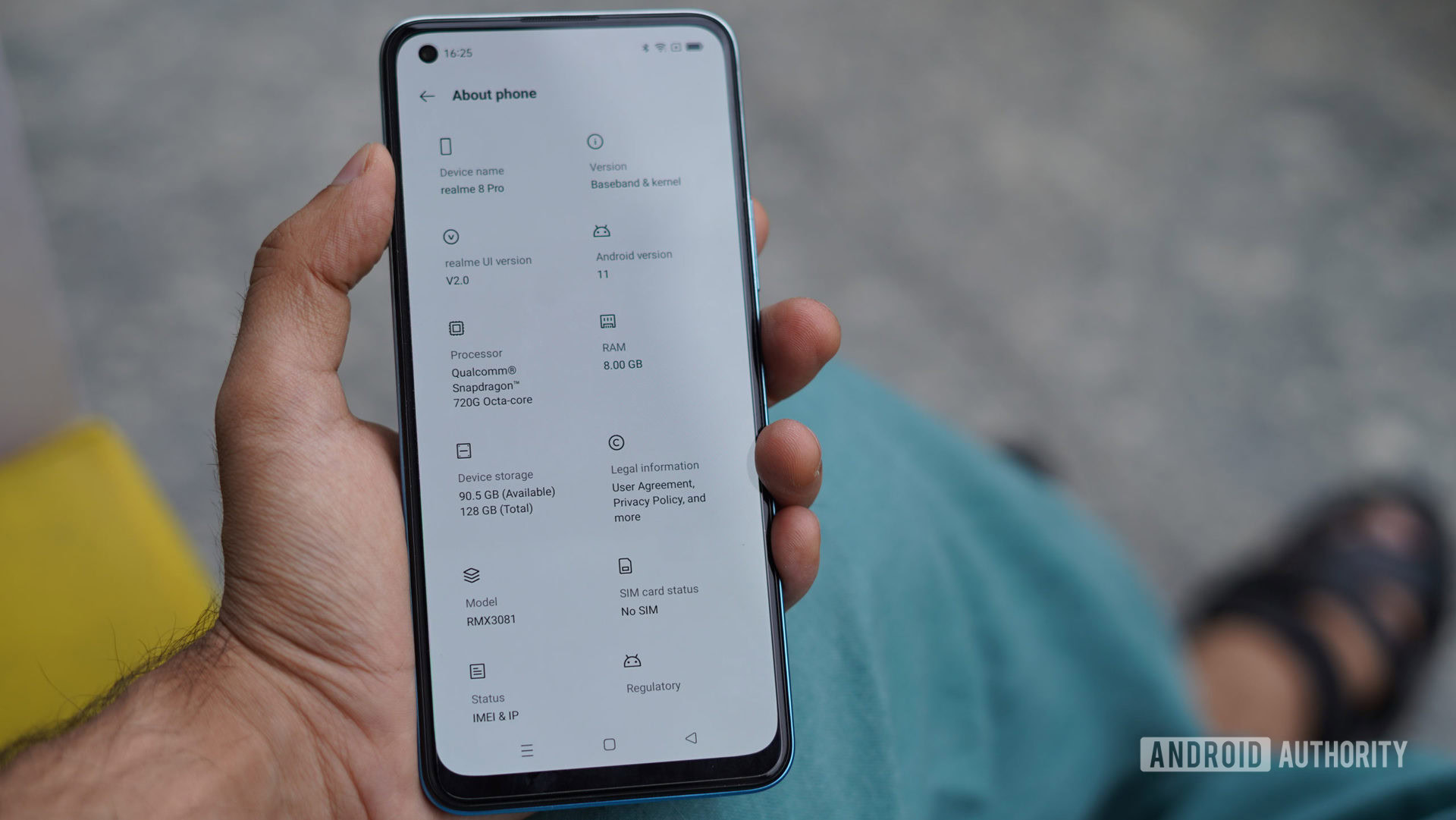
The realme 8 Pro retains the Snapdragon 720G platform that powered the realme 7 Pro. Performance is satisfactory, but the platform is definitely starting to show its age. While day-to-day operations are reasonably fine, I noticed a bit of micro-stutter while navigating the interface. This becomes all the more apparent in demanding apps and when juggling multiple apps.
Moreover, while the realme 8 Pro is able to max out graphics in Call of Duty: Mobile, you can see CPU usage immediately spike along with an increase in heat around the back. You’re also not going to get a steady 60fps at max settings in intensive 3D games. The phone will suffice for moderate gaming, but if that’s your primary use case, you should look take a long and hard look at alternatives. This is true especially if you plan to hold on to your phone for a while as the chipset is far from future-proofed.
Micro-stutter is very noticeable in the interface, and the phone warms up while gaming.
On the software side of things, the phone ships with realme UI 2.0 built on top of Android 11. This brings handy features like quick access to smart home controls among all the other additions you get with Android 11. realme has also included some useful features of its own like extensive customization options and the ability to limit ad tracking with a single tap.
Shame then that the company didn’t do enough work refining its custom UI. Simply put, the software on this phone has way too many bugs. I faced issues with saving portrait mode selfies and encountered a problem where the blue filter would sporadically turn on with no way to toggle it off other than a reboot.
There’s also the matter of notification spam and advertisements — there’s just too much of it. A lot of it stems from impossible to remove system apps like the browser. Having a subsidized price tag is one thing, but the cost here is a real detriment to the user experience.
How long does the battery last?
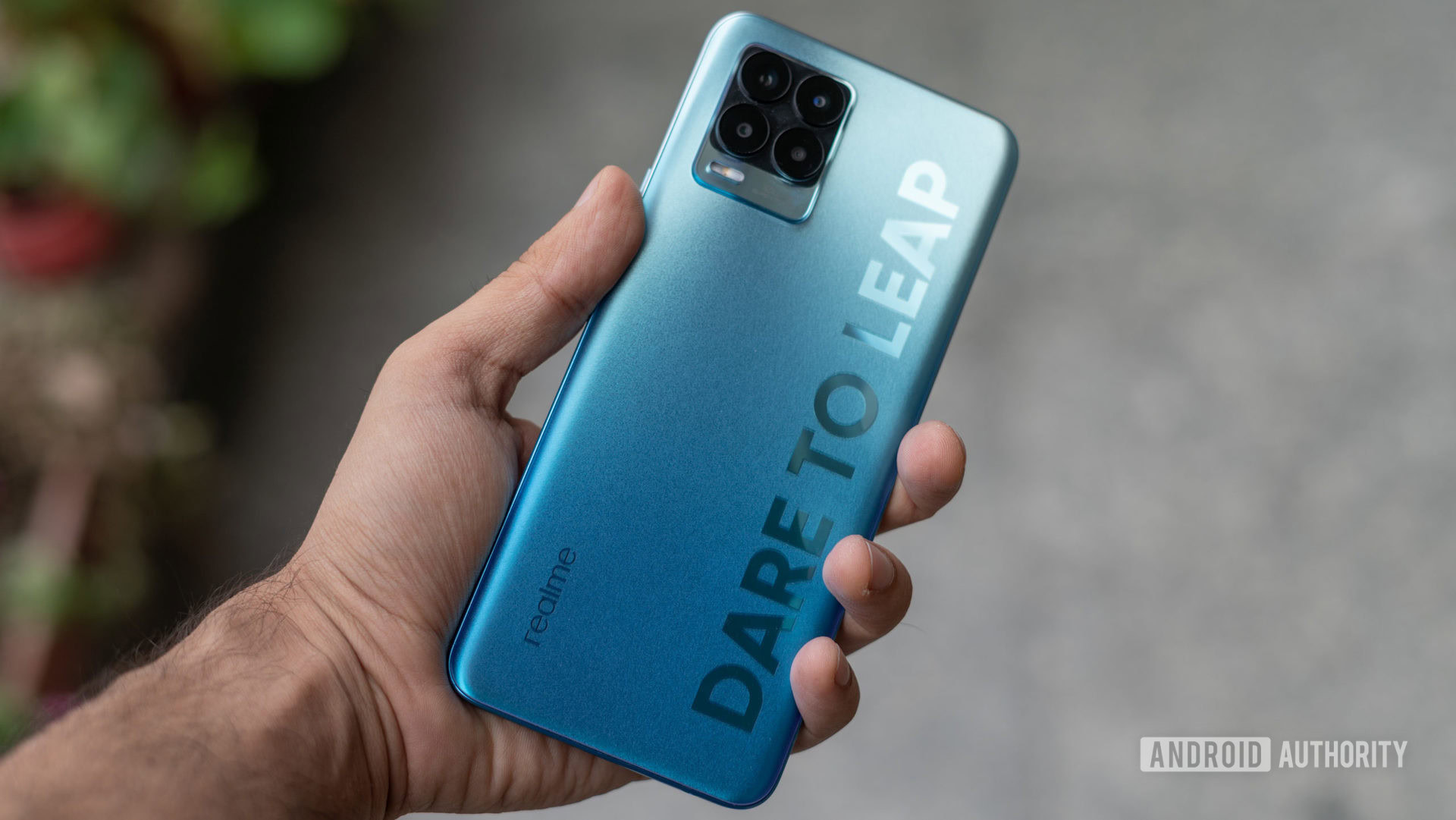
Packing a 4500mAh battery, this is one area where the realme 8 Pro is a winner. All-day battery is no problem at all, and I could easily get 6-7 hours of screen-on time with moderate use including a few minutes of gaming. Charging the phone is suitably fast as well with 50W fast charging being one of the fastest options in the segment. Interestingly, realme bundles in a 65W charger in the box, even though the phone is capped at 50W charging. Regardless, it takes around 50 minutes to go from scratch to 100. Not bad.
The phone doesn’t support wireless charging, but that isn’t a big miss at this price point.
Does the realme 8 Pro have good cameras?
realme has been hyping up the camera setup on the 8 Pro, and for good reason too. The primary 108MP camera does a pretty good job of producing appealing-looking images with just a hint of oversaturation.
It’s not the most neutral camera around, but the sharpening and saturation boost are fairly subtle. I quite liked the images straight out of the camera. Moreover, realme’s HDR implementation does a better job at taming highlights than the Redmi Note series. Color tuning across the ultra-wide and standard camera isn’t consistent, which is something we’ve seen before on other realme phones as well. You’ll notice the ultra-wide camera pushing the contrast hard to make the images pop.

The primary camera is the star of the show here with an even exposure and contrasty images that look great posted up on social media. Additionally, the phone retains a very good amount of detail, and noise reduction on images from the primary camera isn’t too aggressive.
Indoor images are captured reasonably well though you can definitely see the noise levels creeping up as the day gets darker.
The built-in night mode comes in handy in low-light conditions. You’ll need stable hands, but it is possible to get usable results, though the noise levels are still pretty high all around.

The phone has a 2MP macro camera, as is the trend for budget devices. It does pretty well at capturing close-up shots, but the resolution is far too low for any serious photography and you’ll need good lighting to make the most of it.
realme has also built-in a range of software features like a tilt-shift mode, as well as a timelapse-based starry sky mode. Unfortunately, there’s too much light pollution in Delhi to be able to test out the feature. Video recording tops off at 4K at 30fps. I found the footage to be well saturated like the images, with reasonably low noise. Low-light videos, however, are average at best.
The front-facing 16MP selfie camera nails the white balance, but there’s a bit of latency here. You’ll want to hold the camera steady to get a stable shot. There are also telltale signs of skin enhancement even with the beauty mode turned off. Selfies also tend to look a bit washed out. Meanwhile, the portrait mode flat out refused to work for me and only saved a glitched green image. Having spoken to other people testing the phone, this doesn’t seem to be an issue with every unit. We’ve reached out to realme about this issue and will update accordingly.
realme 8 Pro specs
| realme 8 Pro | |
|---|---|
Display | 6.4-inch, FHD+ Super AMOLED 2,400 x 1,080 resolution 60Hz |
Chipset | Qualcomm Snapdragon 720G 2x Kyro 465 Gold 6x Kyro 465 Silver |
GPU | Adreno 618 |
RAM | 6/8GB |
Storage | 128GB |
MicroSD | Yes |
Battery | 4,500mAh USB-C 50W charging 65W charger in box |
Camera | Rear: 108MP f/1.8 8MP f/2.2.25 ultra-wide 2MP f/2.4 macro 2MP f/2.4 monochrome portrait Video: 4K at 30fps, 1080p at 120fps Front: 32MP f/2.5, 85 degree FoV |
IP Rating | N/A, splash-proof |
Headphone port | Yes |
Connectivity | Dual nano-SIM slots WiFi 802.11 a/b/g/n/ac 2.4/5GHz Bluetooth 5 |
Security | In-display fingerprint sensor |
Software | Android 11 realme UI 2.0 |
Colors | Infinite Blue, Infinite Black, Illuminating Yellow |
Dimensions | 160.6 x 73.9 x 8.1mm |
Weight | 176g |
realme 8 Pro review: Verdict

The realme 8 Pro is, for the most part, the realme 7 Pro redux. The camera upgrade is very welcome, but that alone isn’t enough to take on the massive strides made by Xiaomi in the segment. More than the features, it is the build quality where the Redmi Note 10 Pro truly distinguishes itself as a superior product.
This is further reinforced by the pricing, especially in India. Starting at Rs. 17,999 (~$243) and going all the way to Rs. 20,999 (~$285) for the top-end 8GB RAM variant with 128GB storage, the realme 8 Pro is going up against much stronger competition.
realme needs to dare to leap a little higher if it wants to catch up to its competition.
The Redmi Note 10 Pro Max is the obvious choice with its class-leading specs and a degree of refinement that’s nowhere to be found here. Additionally, the Xiaomi Mi 10i sits within spitting distance, and that phone gives you even more power as well as 5G support. If you want to stay within the realme ecosystem of products, there’s the Narzo 30 Pro that, once again, gives you a whole lot more for your money despite the compromises.
In the UK, meanwhile, the Google Pixel 4a often retails at just over £300. For an extra ~£30 you’re getting a phone that may lack the charging capabilities of the realme 8 Pro, but is otherwise a far superior choice.
The realme 8 Pro is a serviceable budget phone, but hardware doesn’t exist in a silo. realme needs to dare to leap a little higher if it wants to catch up to its competition, let alone beat it.